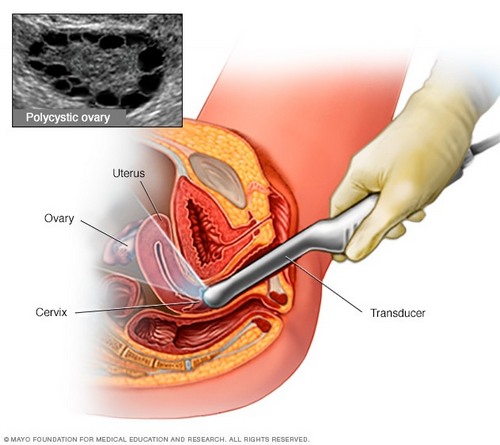Nowadays, it is possible to look inside the abdomen and even perform surgery inside the human body without making a large cut or incision on the abdomen.
With technological advancement and innovation, many of our traditional surgeries can be safely performed under this “minimally invasive” technique.
Under the field of gynaecology, the 2 main types of surgery are: Laparoscopy and Hysteroscopy.
Laparoscopy
Laparoscopy is a procedure to look inside of the abdomen and pelvis using a laparoscope. This helps to see the ovaries, outside of the tubes and uterus and other organs inside the abdomen.
The laparoscope is a special telescope to which a light source and camera is attached. It is about as thick as a pen and about 12 cm long.Laparoscopy is commonly used to:
- find the cause of symptoms such as abdominal pain, pelvic pain
- as part of investigation of infertility.
In addition to simply looking inside, a doctor can use fine instruments to perform surgery inside the abdomen.

This laparoscopic surgery is also called ‘key-hole surgery’ or ‘minimal invasive surgery’ and maybe used to treat cysts, endometriosis, fibroids, perform hysterectomy and even pelvic floor reconstruction.In general, compared to traditional surgery, with laparoscopic surgery there is usually:
- less pain following the procedure.
- a shorter hospital stay.
- a quicker recovery.
- a much smaller scar
Hysteroscopy
This involves putting in a telescope to see the inside of the womb
Prior to Surgery
You will require to fast for at least 6 hours before the surgery. You will be given instructions regarding the time from when you should begin fasting and when to come in to the hospital.
Bowel Preparation
Your surgeon will instruct you regarding the bowel preparation if required. This will entail drinking a purgative the evening before surgery and taking light (eg soup) diet the night before surgery. Usually this will lead to you having diarrhea. While unpleasant, this procedure minimises the risk of surgical complications from bowel injury during your surgery.
In the Operating Theatre
The nurse anesthetist or anesthesiologist will place four adhesive tabs on your chest to monitor your heart rate.
An intravenous drip will be set to help give you the required medication and fluids during surgery. The anesthetist will then give you a mask to breathe into and will administer some medication that will make you go off to sleep.
The surgeons will make a small about 1-1.5 cm cut inside your navel and through this the laparoscope will be introduced. Carbon dioxide gas (CO2) will be put into the abdomen through a special instrument inserted into the navel. This gas helps to distend the abdomen, making it easier for the surgeon to see the internal organs during laparoscopy. The gas will be removed at the end of the procedure.
Two or three small ½ cm cuts will be made on the lower abdomen to put in the other instruments to be able to perform the surgery. At the end of the surgery, these will be repaired using dissolvable material.
After Surgery
After surgery, you will wake up in the recovery room. You will be transferred to the ward from the Recovery Room about one hour after surgery.
You will be having an intravenous drip running after the operation till you are able to tolerate feeds. Injectable medication will be given for pain or nausea. You can tell your nurse if you are uncomfortable and need more pain relief.
You may experience a sore throat. This is caused by irritation from a tube placed through your throat into the windpipe (trachea) during anesthesia. It usually lasts for just a few days and can sometimes be helped by throat lozenges.
You may have a tube draining urine after the operation and your surgeon will decide when it is to be removed. If there is no tube draining urine, you can ask for a bedpan to empty your bladder. Your surgeon will decide when you will be allowed to go back home. This maybe 4-6 hours after surgery at the earliest.
Gas Pains
You may have some pain in your shoulder tip. This is caused by the gas which had been pumped inside irritating the diaphragm which has the same nerve supply as the shoulder tip. This pain passes off in a couple of days.
Recovery after a laparoscopic procedure is very rapid. There is no need for bed rest and most patients are able to resume full activities within a few days to a week after laparoscopy.
Possible complications of Laparoscopy
There may be some minor bleeding or bruising around the skin incisions.
Post operative infections or allergic reactions to medications used may occur as well. Occasionally retention of urine, or clot formation in the legs may occur.
Possible serious complications which may occur include the following:
- Accidental damage to structures inside the abdomen such as the intestines, urinary bladder, ureters (tubes that bring urine from the kidneys to the urinary bladder), uterus (womb) or certain blood vessels. This is rare and happens in about 3-4 per 1000 procedures but if it occurs a cut on the abdomen may be needed to correct the damage.
- Excessive bleeding and the formation of hematomas (blood collections) of the abdominal wall near the incisions. This may occasionally require blood transfusion
- As with any operation, there is a small risk of complications of anaesthesia. Certain conditions like previous abdominal surgery, presence of adhesions, severe endometriosis, pelvic infections, obesity, or excessive thinness may increase the risk of these complications. If complications occur, the hospital stay will be prolonged. The risk of death during laparoscopy is very rare – about 3%-8% per 100,000 and is less than the risk of death during pregnancy.



